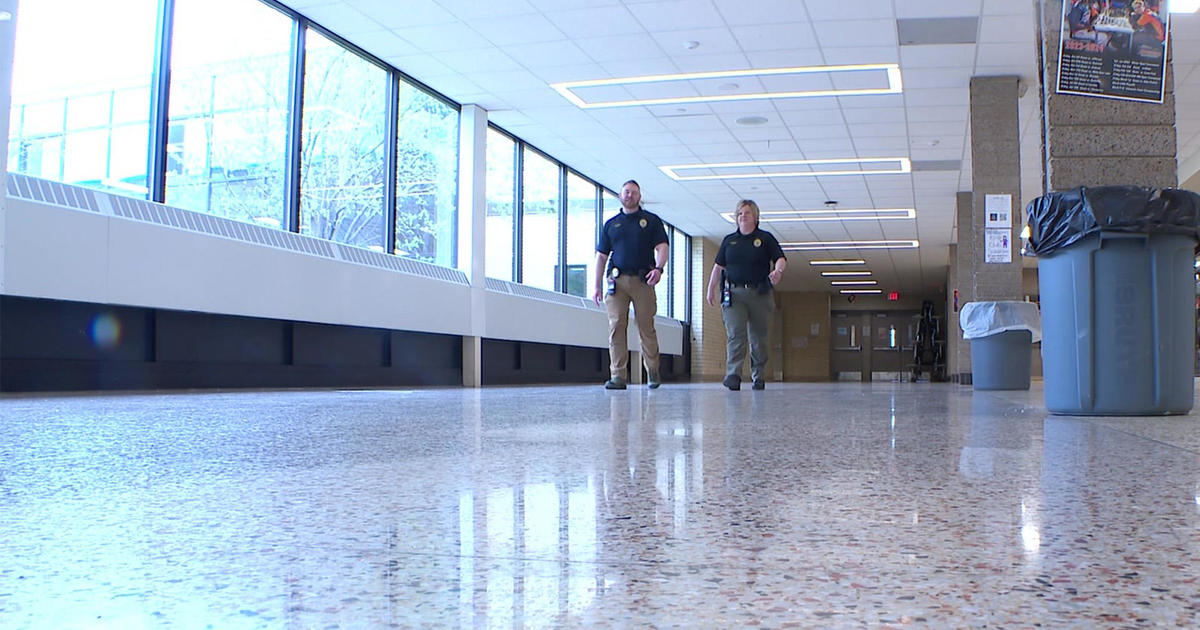Good Questions: The Vice President, Tornado Sirens & Seeing In The Dark
MINNEAPOLIS (WCCO) -- Every Friday, Heather Brown answers some burning questions from WCCO viewers. This week, she talks about seeing in the dark, the Vice President and tornado sirens.
Seeing In The Dark
Five-year-old Chase from Prior Lake asks: Why do our eyes take so long to adjust to the dark?
"Think of our eye as a camera," said Dr. Angela Oster, an ophthalmologist with West Metro Ophthalmology. "There are a few things that help us adjust light to dark."
First, the pupil acts like the aperture on the camera by constricting in a bright environment to restrict how much light gets in. It then dilates open in a dark environment to allow more light in.
But, further back in the eye the retina, which acts like the film of the camera. Within the retina, there are two different kinds of cells: rods and cones. The rod cells are charge of dim lights and the cone cells are in charge of bright lights.
"The cone cell, one they're hit by light, they recover more quickly," Dr. Oster said. "The chemicals in the rod cell take about 20 minutes to be able to see in a dim situation again."
Vice Presidential Term Limits
With talk this week about the possibility of Vice-President Biden running for President, Joe from St. Joseph wants to know: Could he run for Vice-President again? Can the Vice President serve more than two terms?
According to the Annenberg Public Policy Center, http://www.factcheck.org/2008/04/vp-term-limits/ the answer is yes, but it's never happened. Unlike the Presidency, there is nothing in our Constitution that puts term limits on the Vice-Presidency.
Tornado Sirens In A Power Outage
Five-year-old Sandon wants to know: Would the tornado siren work if there's no electricity?
A spokesman for the Department of Public Safety says many outdoor warning systems have battery back-ups, but it varies from county. Whether or not there is a back-up depends on the type or age of the siren.
In Hennepin County, cities are responsible for the purchase, maintenance and replacement of the sirens. The county director of emergency management estimates about 75% of the 261 sirens have some form of power back-up giving them an extra 6-12 hours. Some of them also have automatic power generators and others are solar charged.
The sirens are constantly being updated, but some of the oldest ones (pre-1965) were exclusively used for a nuclear attack warning, so a one-time use was the standard.
"Power backup is really important in tornado outbreaks or other severe weather that can come in successive waves," said Eric Waage, director of Hennepin County Emergency Management. "Hennepin County Emergency Management has three mobile sirens that can fill gaps in coverage when sirens are physically knocked off line by storms."
In Ramsey County, 100% of the sirens in the City of St. Paul and 71% of the sirens in the suburban areas will work during a power outage.
"The most important thing however is that the outdoor warning sirens are only designed to be heard outdoors," said Judd Freed, director of Ramsey County Emergency Management. "As an agency we urge all of our public to have weather alert/all hazard alert NOAA radios and/or smartphone weather alert apps."



